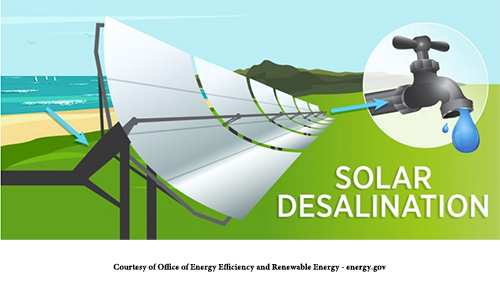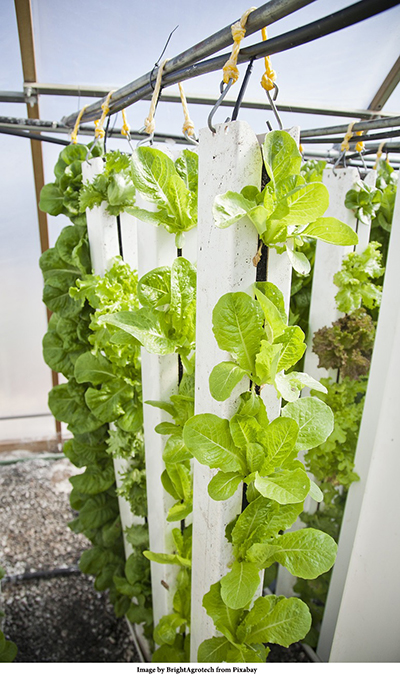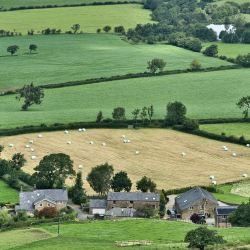Could the news on the environment get any worse? Every day, we are inundated by stories about extreme weather events, including floods, hurricanes, extreme heat, a global water crisis due to severe droughts, and a food crisis resulting from declining land suitable for agriculture. But there is some good news to report. Innovation is driving solutions to many of these problems. Perhaps the situation is not as dire as the news reports.
Water and Desalinization
Last week, the U.N. hosted a summit on sustainable development, including access to clean water. I have previously written about declining water levels in the western U.S. and the use of desalination to transform seawater into freshwater. Although over 17,000 desalination plants are operating worldwide, there are only about 325 in the U.S., with 45% in Florida, 14% in California, and 9% in Texas. The reason they have not been more widely adopted is traditionally, they are expensive to build and use a lot of energy.
Most of the desalination plants operating today heat the salt water and pump it through specialized membranes that separate the water from the salts. This process, reverse osmosis, is done at high pressure, requires a lot of energy, and is costly to operate and maintain.

Less than 1% of the desalination plants today use solar energy. However, solar energy is increasingly being used to advance desalination in new directions. In 2018, the Department of Energy used $21 million to fund 14 projects focused on reducing the cost of solar-thermal desalination and helping the technology reach new markets.
The four topic areas being funded are:
- Innovations in thermal desalination technologies
- Low-cost thermal heat
- Integrated solar desalination systems
- Analysis for solar-thermal desalination.
Solar thermal desalination relies on solar energy using large parabolic mirrors to focus light on seawater and evaporate it. The world’s first solar thermal water purification plant is currently in the pilot stage in Dubai, designed by a company from the Netherlands. When fully operational, it will use solar thermal desalination to produce up to 20,000 liters of clean drinking water per day.
Some researchers have focused on reducing the cost of solar desalination by designing smaller, portable devices. One device contained ten 3-D printed nylon frames stacked and placed vertically on top of a saltwater reservoir. A black solar absorber heats up and evaporates the water that condenses onto aluminum foil, repeated down the stack of frames. Put on a rooftop in not-so-sunny Boston, the device produced 72 milliliters (about 1/3 of a cup) of water in 4.5 hours. Although this may not seem like much, a few of these put together could provide a low-cost method for desalinating water for individual households.
Another innovative idea combines the desalination of seawater with food production. A vertical floating sea farm has two chambers: an upper chamber where plants are grown and a lower chamber for harvesting seawater. The sea farm uses solar power to soak up the seawater, trap the salts, and release clean water vapor into the air, which is condensed on water belts and transferred to the upper chamber where the plants are grown. Although this idea is still experimental, the prototype grew broccoli, lettuce, and Pak Choi, with a survival rate of 80%, on seawater without additional irrigation.
Food Production
Producing adequate food for a growing population remains a huge problem today. Farming practices, organic or not, have traditionally required large amounts of land and water. With much of the world experiencing declining arable land suitable for agriculture and reduced available clean water for irrigation, concerns about adequate food production are real. The cost of transporting food from farms to cities is one reason for increasing food costs. Transportation costs made up about 5 cents of every dollar a consumer spent on food at the grocery store in 2021. Eating locally sourced foods is not new; there are new solutions.
Controlled Environment Agriculture (CEA) is a form of farming that builds off the concept of greenhouse farming. Temperature, moisture, lighting, and overall climate are controlled to promote optimal plant growth. Local CEA facilities can provide fresh fruits, vegetables, and flowers free of fertilizers or pesticides, without discharge to surface or groundwater. Greenhouses can be designed with advanced lighting and control systems tailored to the needs of the specific produce grown. Rural states like West Virginia are leading the way on CEA, with large greenhouses dotting the landscape.
 CEA often uses hydroponics, growing plants without soil, as its farming method. Hydroponics involves growing plants totally in water, often in growth trays that are stacked vertically. This enables farmers to grow 3 to 10 times more crops in the same amount of space than traditional farms. In addition, the soilless process minimizes the number of insects and weeds that invade the plants, reducing the use of pesticides.
CEA often uses hydroponics, growing plants without soil, as its farming method. Hydroponics involves growing plants totally in water, often in growth trays that are stacked vertically. This enables farmers to grow 3 to 10 times more crops in the same amount of space than traditional farms. In addition, the soilless process minimizes the number of insects and weeds that invade the plants, reducing the use of pesticides.
The concept of bringing food closer to cities has been embraced by an entrepreneur in the Netherlands who has designed the world’s first floating farm to include animals. The Netherlands has been at the forefront of innovation concerning water issues; with one-third of the country below sea level and flooding a constant threat, they have developed innovative solutions to water problems.
The Floating Farm Rotterdam, open in 2019, is a floating barge that contains about 40 dairy cows. The barge rises and falls with the tides and never tilts more than 11 inches, even with the winds topping 70 mph. It is a self-sustaining ecosystem where cows eat potato peels and grass clippings. A robot (like a Roomba) sucks up the cow dung and turns it into fertilizer. Another robot milks the cows, subsequently bottled as milk or yogurt and sold at local grocery stores.
“He [Peter Van Wingerden] wanted to produce healthy food close to consumers, reduce long transportation lines and times between production and consumption, and show consumers in a transparent and educational way how healthy food can be produced.”
- Peter Van Wingerden, Founder the Floating Farm Rotterdam
He is next planning a floating farm for chickens and vegetables. “We will have 7000 chickens to produce 2 million eggs per year and a 2000 square meter vegetable growth surface where we will produce herbs, leafy greens, etc.”
In some rural areas, constant flooding is a huge problem. In southern India and Bangladesh, water has been rising over 3 centimeters a year, and storms have increased by 47% over the last decade. This has made conventional farming increasingly difficult, leading to the development of floating farms.
These floating farms are designed using bamboo rafts and hydroponic technology to grow various seasonal crops. Solar power and a small irrigation unit remove saltwater as the rafts work alongside fish and crab farming. The floating farms are designed to withstand severe storms. Although cyclones caused billions of dollars of damage over the past several years, the floating farms were estimated only to suffer a 10% loss
So often today, we live in a “woe is me” society. Many solutions are available to today’s problems if we focus on what can be done instead of only focusing on horrible headlines. Solar energy, with significant cost reductions, coupled with CEA, hydroponics, and floating farms, show us a path forward in agriculture that can meaningfully reduce food insecurity while being environmentally responsible.

